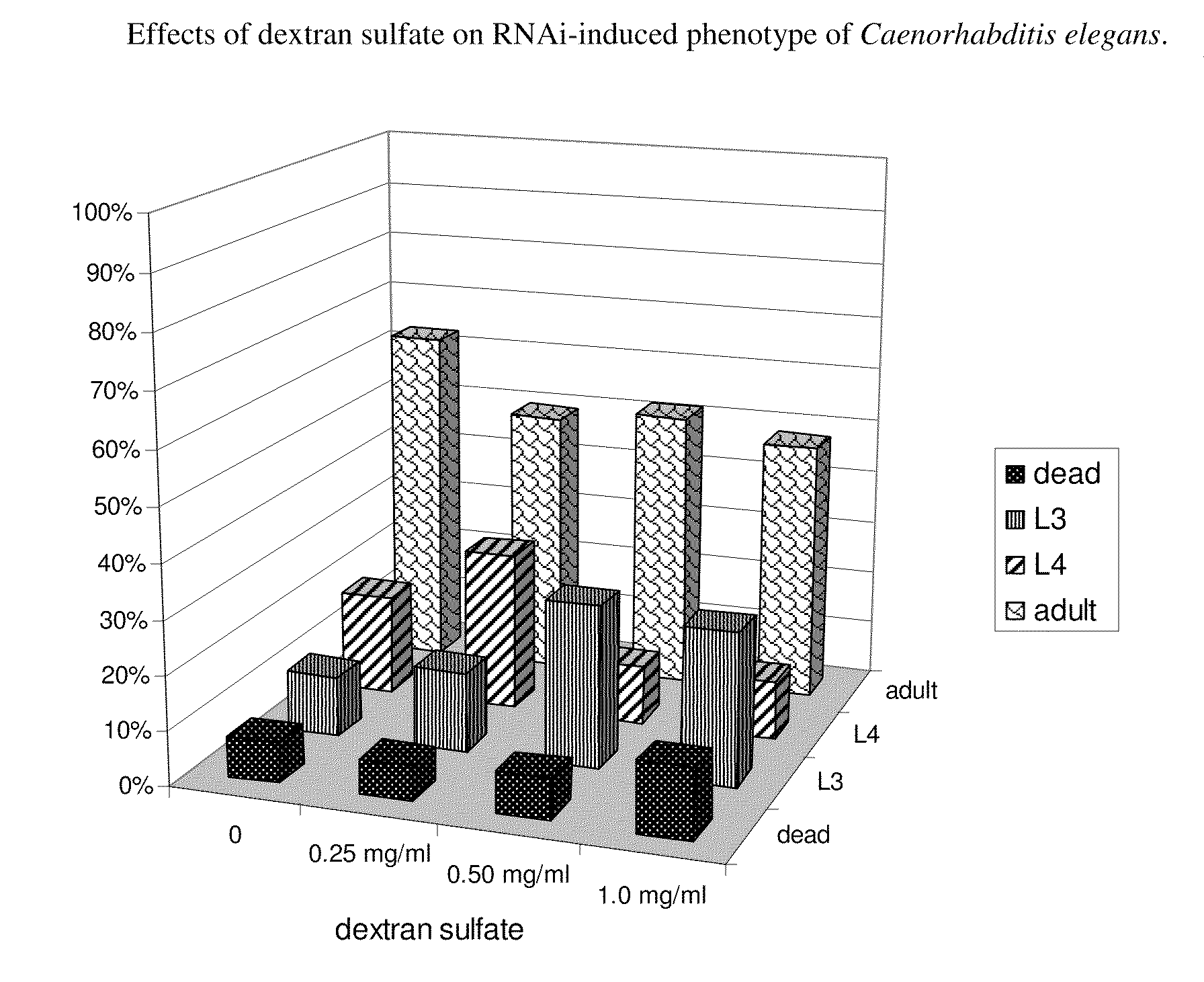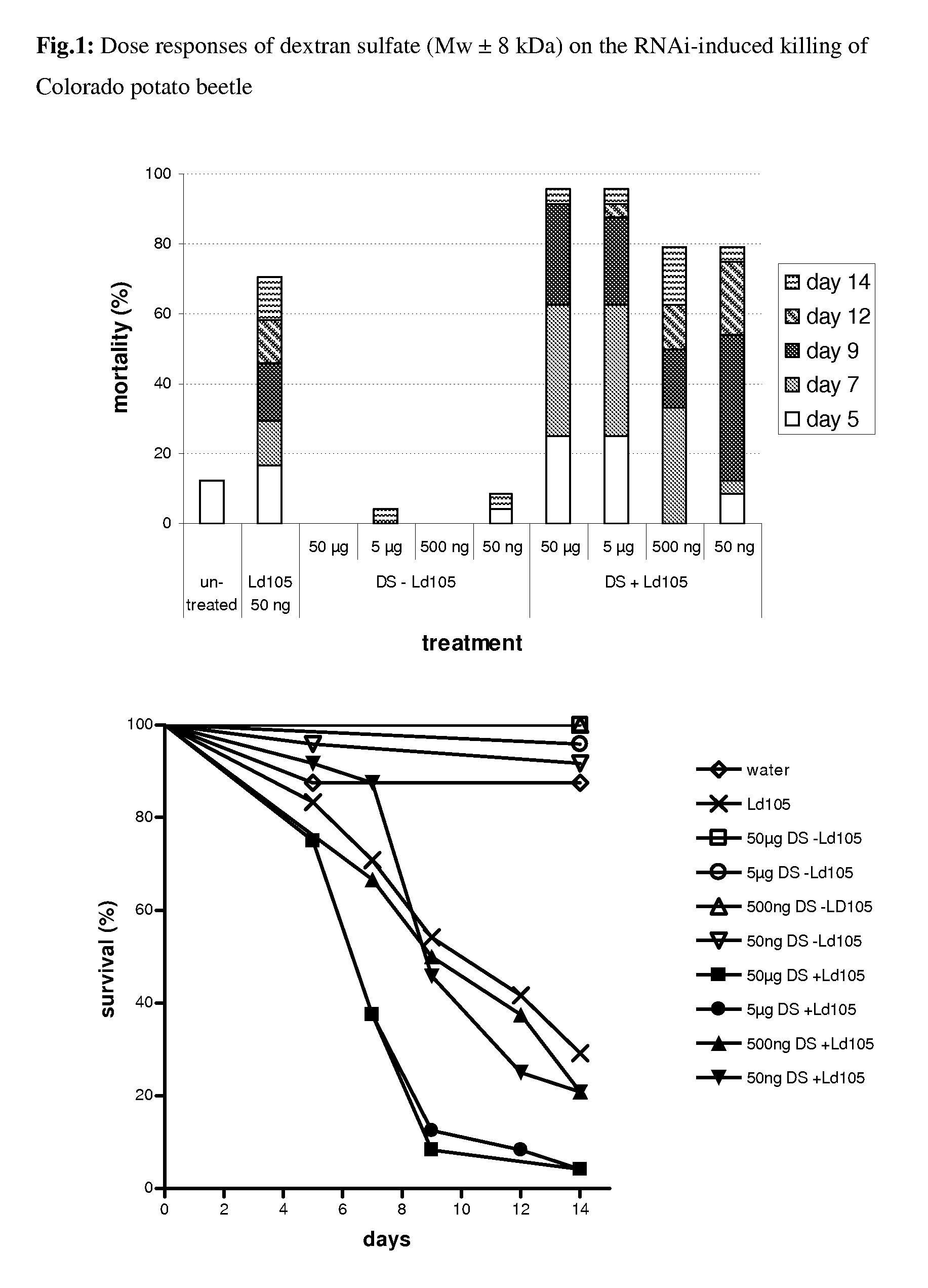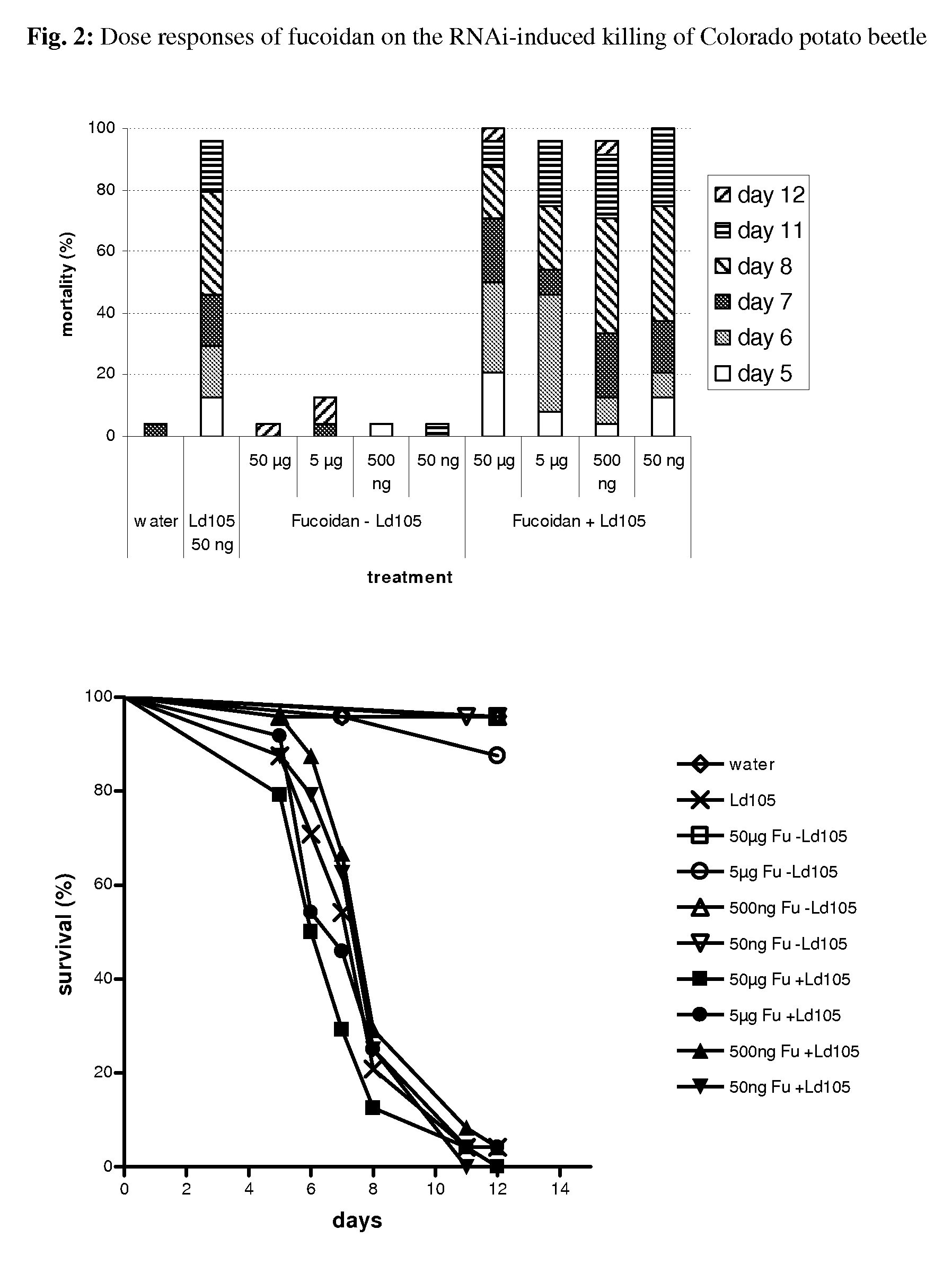Methods and compositions for increasing RNA interference
- Summary
- Abstract
- Description
- Claims
- Application Information
AI Technical Summary
Benefits of technology
Problems solved by technology
Method used
Image
Examples
example 1
The Effects of Dextran Sulfate (±8 kDa) at Different Concentrations
[0153]In a Colorado potato beetle (CPB) larvae bioassay, target Ld105 dsRNA (SEQ ID NO:1) was tested at one amount (50 ng) in the presence of dextran sulfate (average Mw ±8 kDa; Sigma cat. no. D4911) at different amounts ranging from 50 ng to 50 μg per larvae. The bioassay was typically performed in an 48-well-plate containing 500 μl of artificial diet per well. Thirty μl of test solution consisting of 5 μl Ld105 (SEQ ID NO 1) dsRNA (starting concentration 10 ng / μl) and 25 μl of dextran sulfate (of varying concentrations in Milli-Q water) was applied topically to the diet and the diet left to dry for about two hours in the laminar flow at room temperature. One 2nd stage CPB larva was placed in each well. Per treatment, 24 insects were tested. The plates were incubated in the insect rearing chamber at 25° C. and ±50% RH, with a photoperiod of 16 hours light / 8 hours dark. Mortality was scored over the course of the exp...
example 2
The Effects of Fucoidan at Different Concentrations
[0157]In a CPB bioassay (set-up described in Example 1), target Ld105 dsRNA (SEQ ID NO:1) was tested at one quantity (50 ng) in the presence of fucoidan (average Mw ±20 kDa; Sigma cat. no. F5631) at different amounts ranging from 50 ng to 50 μg per larva.
[0158]The time-to-kill was observed to be reduced with target Ld105 dsRNA in the presence of fucoidan when compared to target dsRNA alone, as is shown in FIG. 2. In this bioassay, at day 7, approx. 70% of larvae were killed in the treatment of dsRNA with 50 μg fucoidan whereas approx. 45% of larvae died on diet containing target dsRNA alone. Very little or no toxicity was associated with fucoidan alone.
example 3
The Effects of Polyinosine at Different Concentrations
[0159]In a CPB bioassay (set-up described in Example 1 but with polyinosine dissolved in 0.9 M NaCl), target Ld105 dsRNA (SEQ ID NO:1) was tested at one quantity (50 ng) in the presence of the nucleotide polyinosine (poly I; Sigma cat. no. P4154) at different amounts ranging from 50 ng to 50 μg per larva. Very little or no toxicity was associated with poly I alone.
[0160]No significant effects (P-value>0.05) were obtained, as is shown in FIG. 3.
PUM
| Property | Measurement | Unit |
|---|---|---|
| Fraction | aaaaa | aaaaa |
| Fraction | aaaaa | aaaaa |
| Fraction | aaaaa | aaaaa |
Abstract
Description
Claims
Application Information
 Login to View More
Login to View More - R&D
- Intellectual Property
- Life Sciences
- Materials
- Tech Scout
- Unparalleled Data Quality
- Higher Quality Content
- 60% Fewer Hallucinations
Browse by: Latest US Patents, China's latest patents, Technical Efficacy Thesaurus, Application Domain, Technology Topic, Popular Technical Reports.
© 2025 PatSnap. All rights reserved.Legal|Privacy policy|Modern Slavery Act Transparency Statement|Sitemap|About US| Contact US: help@patsnap.com



